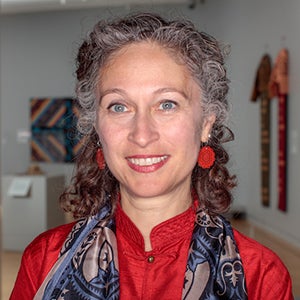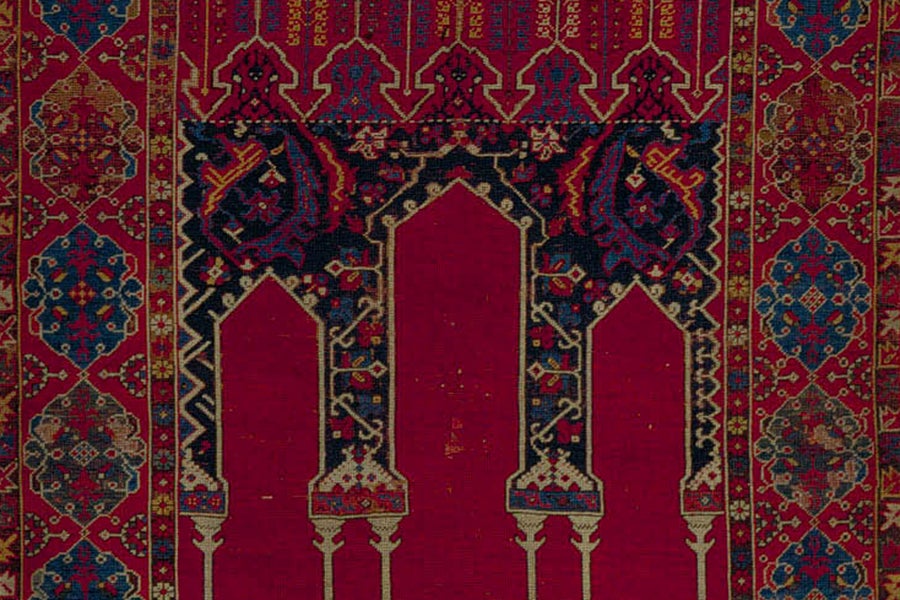Prayer Carpets
Sumru Belger Krody
Synopsis:
This presentation focuses on a type of textile object that is an integral part of Islamic devotion: namely, the prayer carpet. Textiles in Islamic society fulfill far more than the functions normally expected of them. Among them, prayer carpets hold a special place. These knotted-pile carpets are placed on the ground to create a pristine mental, spiritual, and physical space, while concurrently conveying metaphorical meanings for Muslims during their obligatory prayers. This talk explores the context in which these prayer carpets are used as well as their function, size, and design aesthetics within Islamic cultures.
References:
Bloom, Jonathan, and Sheila Blair. Islam: A Thousand Years of Faith and Power. New Have: Yale University Press, 2002. ![]()
Blair, Sheila S. and Jonathan M. Bloom, eds. Images of Paradise in Islamic Art. Hanover, NH: Hood Museum of Art, Dartmouth College, 1991. ![]()
Denny, Walter. How to Read Islamic Carpets. New York, New Haven, and London: The Metropolitan Museum of Art and Yale University Press, 2014. ![]()
Denny, Walter. “Saff and Sejjadeh: Origins and Meaning of the Prayer Rug,” Oriental Carpet and Textile Studies 3, no. 2 (1990): 93–104. ![]()
Ettinghausen, Richard et al. Prayer Rugs. Washington, DC: The Textile Museum, 1974. ![]()
Piotrovsky, Mikhail B., and John Vrieze, eds. Heavenly Art, Earthly Beauty: Art of Islam. Amsterdam: De Nieuwe Kerk ; London: Lund Humphries, 1999. ![]()
Citation:
Sumru Belger Krody, “Prayer Carpets,” Khamseen: Islamic Art History Online, published 11 May 2021.

Sumru Belger Krody joined The Textile Museum in 1994, after receiving her undergraduate and graduate degrees in classical archaeology from Istanbul University and the University of Pennsylvania, Philadelphia. Her research area is textiles from the late antique through the early modern period in the Islamic lands, with special focus on the influence of textile techniques and structures on iconography, as well as the social and economic power of textiles. She also serves as editor-in-chief of The Textile Museum Journal. She is the author of several books and many articles on textiles arts.


